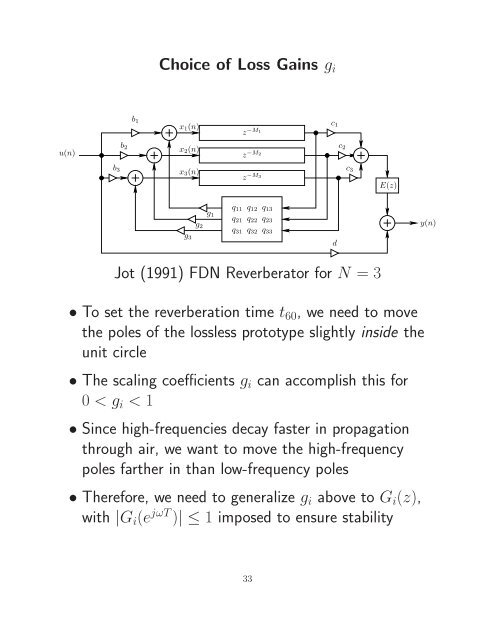Articles - CCRMA - Stanford University
Articles - CCRMA - Stanford University
Articles - CCRMA - Stanford University
You also want an ePaper? Increase the reach of your titles
YUMPU automatically turns print PDFs into web optimized ePapers that Google loves.
u(n)<br />
b3<br />
b2<br />
b1<br />
Choice of Loss Gains gi<br />
x1(n)<br />
x2(n)<br />
x3(n)<br />
g3<br />
g2<br />
g1<br />
q11<br />
q21<br />
q31<br />
z −M1<br />
z −M2<br />
z −M3<br />
q12 q13<br />
q22 q23<br />
q32 q33<br />
Jot (1991) FDN Reverberator for N = 3<br />
• To set the reverberation time t60, we need to move<br />
the poles of the lossless prototype slightly inside the<br />
unit circle<br />
c1<br />
d<br />
c2<br />
c3<br />
E(z)<br />
• The scaling coefficients gi can accomplish this for<br />
0 < gi < 1<br />
• Since high-frequencies decay faster in propagation<br />
through air, we want to move the high-frequency<br />
poles farther in than low-frequency poles<br />
• Therefore, we need to generalize gi above to Gi(z),<br />
with |Gi(e jωT )| ≤ 1 imposed to ensure stability<br />
33<br />
y(n)
















